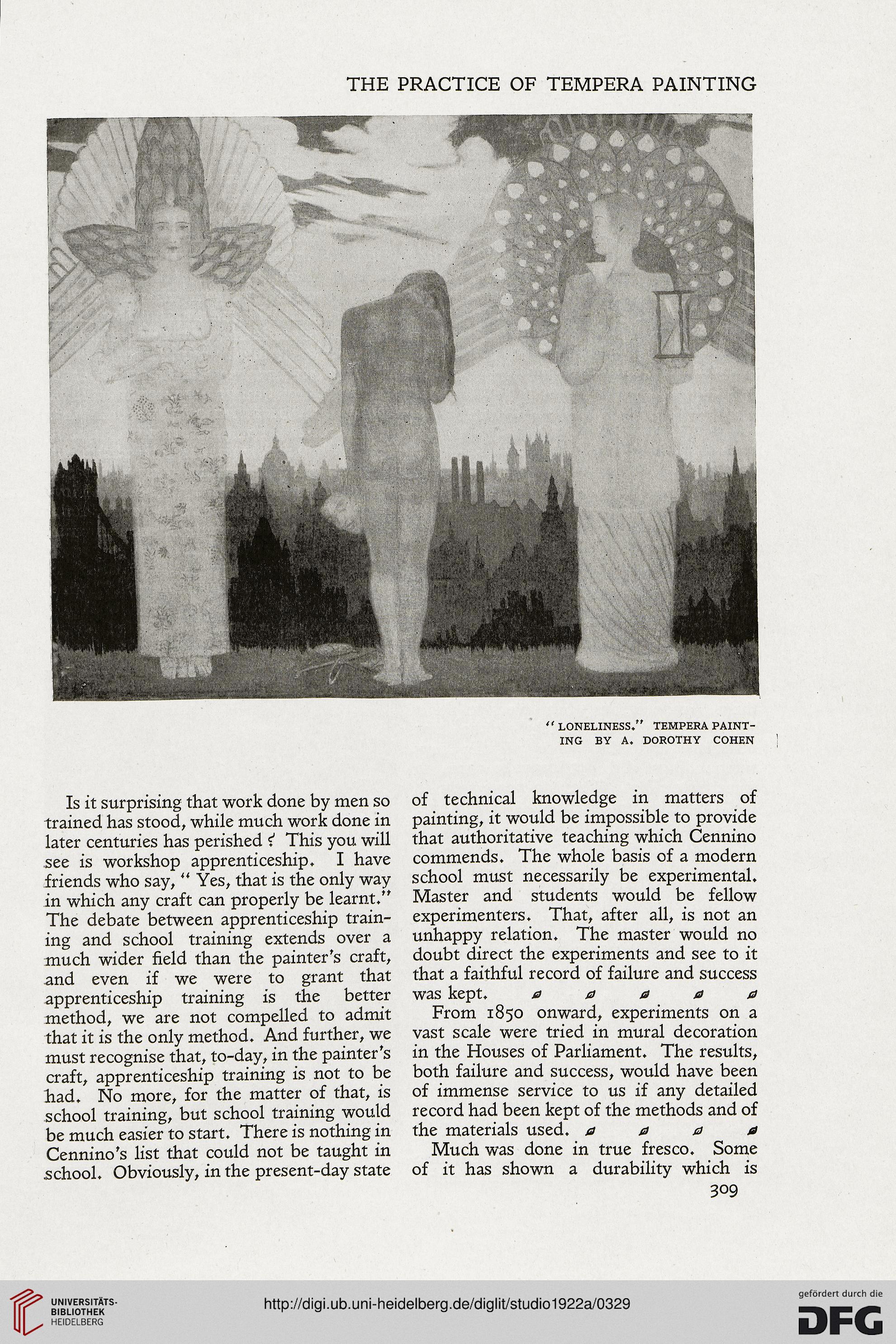THE PRACTICE OF TEMPERA PAINTING
"LONELINESS." TEMPERA PAINT-
ING BY A. DOROTHY COHEN
Is it surprising that work done by men so
trained has stood, while much work done in
later centuries has perished i This you will
see is workshop apprenticeship. I have
friends who say, " Yes, that is the only way
in which any craft can properly be learnt."
The debate between apprenticeship train-
ing and school training extends over a
much wider field than the painter's craft,
and even if we were to grant that
apprenticeship training is the better
method, we are not compelled to admit
that it is the only method. And further, we
must recognise that, to-day, in the painter's
craft, apprenticeship training is not to be
had. No more, for the matter of that, is
school training, but school training would
be much easier to start. There is nothing in
Cennino's list that could not be taught in
school. Obviously, in the present-day state
of technical knowledge in matters of
painting, it would be impossible to provide
that authoritative teaching which Cennino
commends. The whole basis of a modern
school must necessarily be experimental.
Master and students would be fellow
experimenters. That, after all, is not an
unhappy relation. The master would no
doubt direct the experiments and see to it
that a faithful record of failure and success
was kept. 0 a a a a
From 1850 onward, experiments on a
vast scale were tried in mural decoration
in the Houses of Parliament. The results,
both failure and success, would have been
of immense service to us if any detailed
record had been kept of the methods and of
the materials used, 0000
Much was done in true fresco. Some
of it has shown a durability which is
309
"LONELINESS." TEMPERA PAINT-
ING BY A. DOROTHY COHEN
Is it surprising that work done by men so
trained has stood, while much work done in
later centuries has perished i This you will
see is workshop apprenticeship. I have
friends who say, " Yes, that is the only way
in which any craft can properly be learnt."
The debate between apprenticeship train-
ing and school training extends over a
much wider field than the painter's craft,
and even if we were to grant that
apprenticeship training is the better
method, we are not compelled to admit
that it is the only method. And further, we
must recognise that, to-day, in the painter's
craft, apprenticeship training is not to be
had. No more, for the matter of that, is
school training, but school training would
be much easier to start. There is nothing in
Cennino's list that could not be taught in
school. Obviously, in the present-day state
of technical knowledge in matters of
painting, it would be impossible to provide
that authoritative teaching which Cennino
commends. The whole basis of a modern
school must necessarily be experimental.
Master and students would be fellow
experimenters. That, after all, is not an
unhappy relation. The master would no
doubt direct the experiments and see to it
that a faithful record of failure and success
was kept. 0 a a a a
From 1850 onward, experiments on a
vast scale were tried in mural decoration
in the Houses of Parliament. The results,
both failure and success, would have been
of immense service to us if any detailed
record had been kept of the methods and of
the materials used, 0000
Much was done in true fresco. Some
of it has shown a durability which is
309




